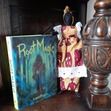Eden Royce's Blog, page 12
August 13, 2015
The Misadventures of Bob the Zombie: A Review
I’ll admit it. I’m not a huge zombie fan when it comes to horror books. I’ve read a precious few and no standouts come to mind. Although I’m tempted to give Armand Rosamilla’s Winter of Zombie a try later this year.
Not that they aren’t a good monster; they are—ravenous, relentless, single-minded in their drive to devour you. But I tend to feel they work better on screen. In addition, I’ve noticed some publishers stating outright in their calls for submissions: No Zombies.
I understand. There is a plethora of zombie books out there and I imagine slush readers have to wade through a ton of not-so-creative stories to find any glimmer of new penny brightness. 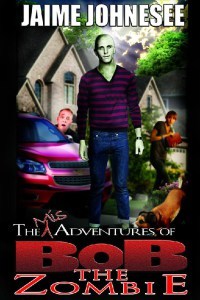
The Misadventures of Bob the Zombie was that newness for me. While the series of novellas by Jaime Johnesee isn’t marketed as Young Adult, she crafts the character of Bob with plenty of innocence and wide-eyed discovery of the world around him, and I think this series would appeal to a young readership as Bob reacts in a way I associate with younger characters. Bob’s voice is almost light-hearted when her tells his tale of how he attained zombie status, and he doesn’t have the anger and angst you might be expecting in such a character. He also has charming qualities you might not normally see in a twenty-five year old ghoul: he embarrasses easily—especially when his body parts fall off—and he’s a staunch and loyal friend.
Johnesee’s collection includes five separate stories: Bob the Zombie, Bob the Spy, Bob the Valentine, Bob the Hero, and Bob the Mentor. Bob’s adventures are fun and funny, with intermittent moments of sympathy and the occasional groan of “Are you kidding me?” tossed in.
This series is not your typical mindless, human devouring zombie series. He wants to improve his community, keep his Mom happy, and just generally stay in one piece (which he does with the help of a stapler).
I enjoy books where the hero has good intentions, is a tad awkward, but manages to get everything sorted out by the end. How can you not like a guy, er…zombie, like that?
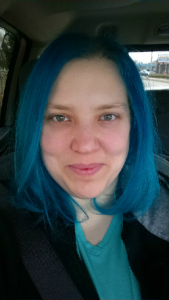
Jaime Johnesee, author of the Bob the Zombie novella series.
Jaime Johnesee is a wife, mother, zoologist, and author, who spent nearly fourteen years as a zookeeper before a debilitating illness caused her to lose that dream. Being the stubborn sort, she decided to rise from the ashes and pursue her other dream of writing full time. She’s living proof that dreams do come true if you work hard and set your mind to it — So, don’t give up.
One of her favorite things is receiving reader feedback. Hearing about what you liked and what you didn’t like helps her become a better author. Feel free to email her at JJ@JaimeJohnesee.com and find her on her website, Facebook, Twitter, Goodreads, and G+.


August 12, 2015
Graveyard Shift Sister: Chatting with Nuzo Onoh
I was updating my media kit recently and I realized I’ve been writing features for the Graveyard Shift Sisters blog for over a year now. For anyone unfamiliar with Graveyard Shift Sisters, it is a site dedicated to purging the black female horror fan from the margins. Before sites such as GSS, many of us had few like minds to discuss our love of the genre with. In talking with other black female horror writers, we also experienced surprise from others–readers and authors alike–and it was much the same:
*You* write horror? Really?
Yes. Yes, I do and I’m not alone.
Those responses were the reason I reached out to the owner of GSS, Ashlee Blackwell, and asked if I could write a feature on the black women who write horror. To my delight she responded with a resounding, “Yes!”.
My posts for these features tend to be my reading a book of the author’s choice and reviewing it, along with sending them an emailed list of questions about their work and inspirations, their experience with horror, and what shape they would like to see future of horror take. I’ve been told it’s one of Graveyard Shift Sisters’ most popular features. *Blush* (Actually, I think it’s badass.)
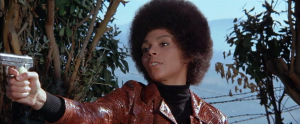
Badass like Rosalind Cash as Lisa in The Omega Man badass.
This time, I had a real treat with the feature. Since I’ve moved to the UK, I’ve not been able to find a strong group of writers to talk shop with and I missed that feeling of camaraderie. So when African horror author Nuzo Onoh emailed me to review her latest release, Unhallowed Graves, I asked her if she’d be open to doing the interview on the phone instead of via email. (My first review/interview with her was via email on her short horror collection, The Reluctant Dead. You can read about it here.)
Nuzo agreed and I’m so glad she did. It’s different conducting an interview on the phone, but it was the right call to make. (Ha!) We had an inspiring talk about writing, writing horror as a woman of African descent, the similarities between her culture (Igbo) and mine (Gullah-Geechee), and the differences between England and America. (That last topic is for another post.)
Read my review of Unhallowed Graves and my conversation with Nuzo on the first two topics on the Graveyard Shift Sisters site here.
Do you know of a black female horror author whose work I should feature on a future post? Let me know!


August 6, 2015
60 Black Women in Horror Writing
Check out Sumiko Saulson’s “60 Black Women in Horror Writing”. There’s great information on these authors and their work. (I’ve had so many people express surprise that we write horror.) There’s even a free short story or two!
 Originally posted on Damsels With Chainsaws:
Originally posted on Damsels With Chainsaws:
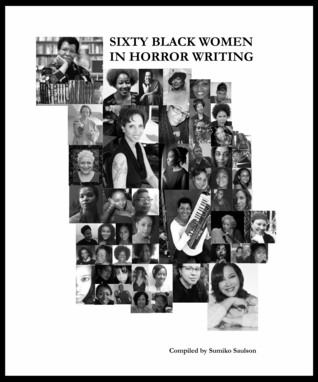 Sixty Black Women in Horror Writing compiled by Sumiko Saulson
Sixty Black Women in Horror Writing compiled by Sumiko Saulson
February is my favorite month to discover new authors. It is both Black History Month and Women In Horror Month (WiHM). Woohoo, double win! Sumiko Saulson’s unique compilation, 60 Black Women In Horror Writing is celebrates both holidays in grand style.
Some of the women profiled in this book are literary geniuses you’ve read before (Octavia E. Butler, Zora Neale Hurston, and Toni Morrison) but Saulson also introduces us to talented women we’ve never never heard of, too. This book is comprised of interviews, essays, and short stories from the author, herself, and Crystal Connor and Eden Royce. Of the short stories I liked Crystal Connor’s “Amber’s New Friend” the best. I’m a sucker for southern gothic ghost stories, however all of the stories presented are worth a read.
 Who Fears Death written by Nnedi Okorafor
Who Fears Death written by Nnedi Okorafor
All 60 women profiled…
View original 189 more words


August 3, 2015
The New Mrs. Collins: A Review
I love a female villain. I don’t read about a lot of them, however. Maybe it’s the books I’m choosing but I don’t see it often enough in my opinion. And black female villains? So rare. During an online Twitter party a week ago, I read about how many readers would love to see a black female villain.
Enter The New Mrs. Collins by Quanie Miller. It’s listed as paranormal on Amazon, but I’d venture to say this book steps its toes into the waters of horror. Just a bit. Enough to cause a few ripples.
Deservedly so. The New Mrs. Collins is an unsettling book with a female villain whose origins are initially obscured. Adira doesn’t know what she is (and neither does the protagonist or the reader until much later.). I enjoy when an author is able to make a “What type of monster is this?” background work for a character. I also love to draw my own conclusions in a book, so I like that not everything about the villain is spelled out.
Adira has a great deal of self-hatred, perhaps understandably, but it didn’t make me sympathetic toward her. I did, however, sympathize with our heroine. Leena is jilted on her wedding day and finds out her husband-to-be had taken up with the mysteriously beautiful, poised, and successful Adira. Adira breezes in, making demands that Leena “give in” to what’s happened and try to move on with finding her own happiness.
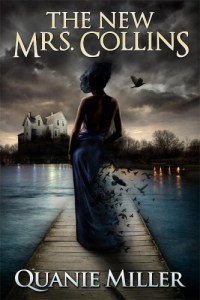
Cover of The New Mrs. Collins. Gorgeous. Chilling. Love it.
But she can’t. There’s something wrong with Mrs. Collins and few people can see it. Those who do are quickly dealt with in ways made even more chilling because of the distant, almost carefree manner Adira uses.
Miller’s writing style is strong and self-assured. I found the setting of small town Louisiana realistic and refreshing in a story that isn’t steeped in voodoo. She doesn’t hesitate to include colloquialisms, and glimpses into the African-American lifestyle in the South in her work without explanations for those unfamiliar. Since I am familiar, I enjoyed those gems: quips and witticisms of town matriarchs, creative expletives, the whole town’s involvement in preparations for the wedding, and the town ladies’ open criticism of the other woman.
In addition, I felt the fact Leena had a child, was not something covered in a lot of paranormal stories today. It made a connection to the former fiancé that was unbreakable, also making Leena’s son a pawn in Adira’s game. Miller is also not shy about putting her characters in desperate situations. After the jilting Leena gives the store clerk her engagement ring to pay for her “My world is crumbling right now” snacks.
One of the best things about the book was that these female characters were fighting for something other than a man. Yes, the struggle began because if his abandoning Leena at the altar, and you would think the entire plot struggle would make him crucial in its resolution, but it happily didn’t. (Honestly, I’m struggling to recall his name.) But the story is about the mystery of Adira that Leena can’t leave alone and her determination to uncover her secrets. She knows there’s something wrong with her… something off and she has to solve it.
Even after being warned off, Leena has to get to the bottom of Adira’s origins. Her obsession causes people who were on her side to turn their backs on her. (Another reason I want to call this a horror novel. Leena experiences so much isolation. Most from her legitimate attempts to help other people whom Adira has tried to destroy.)
Finally, Leena discovers Adira’s mother and we find out a little more about the woman’s motivations through a glimpse at her childhood. Again, it didn’t make me necessarily sympathetic toward her, because kids can be creepy. But I did see the genesis of evil, helped along by a heavy dose of parental fear.
I won’t give you anything on what Adira is capable of, that’s part of the fun of this book. But I will say that I would recommend it as a great summer chiller.
Get The New Mrs. Collins on Amazon or find out more about the author on her website.


July 31, 2015
Writing the Other: Interview with Jay Requard
Writing the other–authors writing characters with backgrounds not of their own, whether that “other” is race, gender, sexual orientation, or religion–is a minefield to some authors.
I’ve spoken with authors who stay away from writing the other and choose to “write what they know” instead. Many times, it’s just that they write within a comfort zone–their own field of experience–and they don’t deviate from it. Which is fine, if that’s their preference. But other authors want to write characters of the other but are hesitant to because they think they’ll be berated for it. So they never make the attempt.
As author Jim Chines says in his blog post, people don’t complain when you write a character who happens to be female (or Asian, or gay, or Jewish). But they might complain if you do it badly: make them one-dimensional and/or steeped in stereotypes.
So how do you do it well?
There are several places to read up on how to do it well. (Although I think, like anything, practice is needed.) Nisi Shawl’s article is a good place to start reading. And listening. But I wanted to reach out to people doing it. Since I don’t know James Patterson, Patricia McKillip, or Tabitha King, I decided to interview a few authors I do know who are writing the other.
First up is Jay Requard, author of The Gem of Acitus, a short sword and sorcery story published by Mocha Memoirs Press.
Synopsis: Master thief Manwe, known to the frontier city of Tolivius as “The Panther”, stalks the streets in search of riches to fuel his people’s rebellion out on the savannah. Lifting a fabled stone from the possession of a posh noble, he is soon trapped in a web of lies and deceit. Caught between the cruelty of a merchant and a lie meant to incriminate him, Manwe must ply the darkness if he is to prove his innocence and save the man he loves.
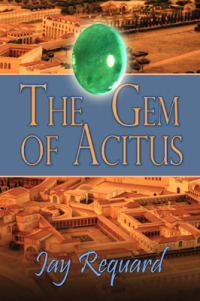
Cover for The Gem of Acitus
ER: Where did the idea for The Gem of Acitus come from? What influenced you?
JR: I’m a big believer in serendipity, as I think writers should be reacting to the world around them. I had the idea for a long time about writing a “rogue story” that would be part Indiana Jones, part Thief (a classic video game), with notes I had learned from Robert E. Howard early-Conan works and Ari Marmell’s Widdershins Adventures. I love the idea of characters using their wits and intellect over bruising their way across a battlefield, though that is my bread-and-butter as well.
Serendipity was cruel for Manwe the Panther, however, as the idea for the main conflict came from an NPR story where an African-American man was released after spending 40 years in jail for a rape conviction that was never properly adjudicated according to the actual evidence because of his race, speaking to how people of color do not often get a fair shake within our society. I believe firmly in social justice and an egalitarian sense of equality, which I believe expands to fair legal treatment. Anyone with a sense of reality or critical thinking ability knows that more often than not, people of color are not afforded that. I had something to say with Manwe, so I said it.
ER: Tell us the storyline in two sentences.
JR: Set against by the dark city where he wins his coin through his wits alone, Manwe the Panther must steal the truth from the mouths of liars if he is save his lover. Facing greedy lords, weird shamans, and time itself, this master thief leaps into action, hoping that he won’t be too late.
ER: When you come up with the concept of a story, do you consider where it’s going to be published before or during writing?
JR: Great question! Yes and no. When it comes to novels (I’ve written three and am working on a fourth), I know what level of publishing I want to throw a manuscript at first. Short stories, however, are like art pieces—I finish them, and then worry about selling them. Since I write in a very specified set of genre (Epic /Heroic Fantasy and Sword & Sorcery), I know the markets available to me. Thankfully, I’ve been able to at least prove myself on the short fiction scene, so it’s easier to get work placed now than it used to be.
ER: Has the story changed from its original concept? How many revisions did you go through?
JR: Another good question! The Gem of Acitus went through two revisions, though the original concept never changed. The biggest challenge was framing the ending. Originally I had it sequenced one way, but I ended up switching it. Both versions worked, but with the help of readers, my fellow writers, my fiancé, and just my intuition, I chose to leave it the way it ended up being published by Mocha Memoirs Press.
ER: Sword and sorcery is not typically a genre full of diversity. What made you create Manwe the Panther as he is: a homosexual man of color?
JR: The only way we bring people into genre is by having positive characters that they themselves can relate to. That is not to say that people of different ethnicities and origins do not love white characters or white authors (they obviously do). That being said, I have to defend my beloved genre: there have always been diverse voices in Sword & Sorcery, be it Charles R. Saunders’ Imaro, CL Moore (a FANTASTIC female voice for the genre), and many more who came from very diverse backgrounds, both socially and in terms of who they are. The problem has always been that for the longest time the arbiters of genre have paid more attention to something else, so many of these great voices were left out or paid little attention to. Thanks to the ability Amazon gives authors to publish their backlists, I hope this changes in time.
ER: Were you concerned about the reception The Gem of Acitus would receive? Why or why not?
JR: A little bit. I don’t want this story to come off as disrespectful. I think Manwe is the story of a positive character that represents a lot of different people, including friends of mine in the LGBT community. He’s a character who tries very hard to do the right thing, even though the right thing often goes in the opposite direction of society at large. I think those kind of characters are really important to talk about, and using a world that is a mix of Ancient Greek and African cultures, I wanted to create a multicultural setting where the world is meeting itself for an inevitable clash, kind of like what we are going through right now with race, gender, and orientation here in America. There are a lot of things to talk about, but what I hope is that I am adding to the discussion on a positive note.
ER: How did you do your research for this work? What sources, if any, did you consult?
JR: I started outlining this storyline near the end of 2013. At the time, I was reading Octavia Butler’s Kindred and listening to a lot of hip-hop, metal, and blues music centered on the ideas of revolution, spirituality, and liberation. I was also writing more and more stories that were firmly outside of the traditional “western European fantasy” box, taking them to different eras like the Bronze Age, the Iron Age, or settings that there were nuanced versions of India and China. In terms of the setting for The Gem of Acitus, I grew up reading David Gemmell, who wrote a wonderful series about Troy. I started reading more books on ancient Afro-Greek art and architecture of the Mediterranean. Franklin Snowden’s Blacks in Antiquity helped me visualize Tolivius, an Archaic city where Manwe’ story takes place. I also read a large body of African folklore for stories examining the passage between worlds, life and afterlife, and the topic of gender as it relates to spirituality. In doing so I found a really interesting West African myth about this hole in the ground where shamans would sneak into the earth for months on end, only to emerge with greater power than what they had had before. I really enjoyed incorporating these elements into the traditional structures of Sword & Sorcery in the dark vein of Karl Edward Wagner, and Manwe was the result.
ER: Many writers are hesitant to write characters unlike themselves. If authors want to write characters from outside of their own experience, whether it be a different race, gender, or sexual orientation, what advice would you give to them?
JR: That is a question that could honestly go on forever. Here’s the Cliff Notes version:
Go in there with honest intentions. The story comes first. You can have the glitteriest writing, the sharpest dialogue, or the wittiest subtext, but none of that matters if you don’t have a good story to begin with. Though I admit this is purely subjective, I wrote a great story first and finished the world-building second when it came to Manwe, including the external and internal issues he deals with.
More importantly, remember that your characters ARE NOT you. Treat them like they are their own individuals. Find the real core of the characters, what lies beneath. My Manwe wants to save his lover. Tolkien’s Bilbo wants to prove himself worthy of being in Thorin’s company. Nix’s Sabriel wants to know who she is in relation to who she came from. Find out what the characters truly want and write around that.
Finally, put in the work to understand perspectives other than your own. Some of us live with far less and some of us live with far more, but we all live with the reality that the world around us is precious and finite, though some of us live like it isn’t, which often leads to bad things. Stories are constructed by where you and your characters are, by who you and your characters are, but it is interpreted through them as first. Reflect what is going on outside within them and what they do in response.

Photograph of Jay Requard, author of sword and sorcery story, The Gem of Acitus
Jay Requard is a Heroic Fantasy and Sword & Sorcery author from Charlotte, North Carolina. When he is not fighting the good fight, he spends his time lifting kettlebells and maces, sipping scotch, painting, and reading voraciously. He has a fluffy cat named Mona.


July 23, 2015
Summer Gets Bigger and Badder!
Looking for a big, bad, summer read? My short story, “Voodooesque” appears in this antho along with twenty-three other fantastic authors.
 Originally posted on The Dark Oak Blog:
Originally posted on The Dark Oak Blog:
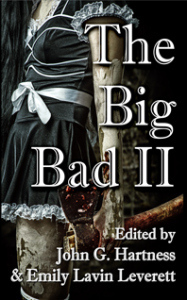 Shout, Scream, Holler; do what ever it takes to make this the best summer ever for books!
Shout, Scream, Holler; do what ever it takes to make this the best summer ever for books!
Everybody loves the bad guys, and this second edition of The Big Bad brings you more to love! A collection of best-selling fantasy and horror writers brings you twenty-four all-new tales of vampires, demons, ghosts, zombies, and the most terrifying monsters of all – humans. Crack open the pages, if you dare, and explore two dozen tales of humor and horror by some of the brightest names in the business!
http://www.darkoakpress.com/bigbad2.html
The Tales:
Mercy’s Armistice – J. T. Glover
A Family Affair – Selah Janel
Old Nonna – Gail Z. Martin
Letters to Logroth – Jason Corner
Skippin’ Stones – S. H. Roddey
The Sea Witch – Kasidy Manisco
A Day in the Life – James R. Tuck
Overkill – Sara Taylor Woods
Voodooesque – Eden Royce
A Fitter Subject for Study –…
View original 100 more words


July 19, 2015
Guest Post: Crafting a Character
I am pleased to have Loren Rhoads as a guest poster on the blog today. Loren was kindly willing to share the origins of one of the characters from her new release, The Dangerous Type, part military sci-fi, part adventure space opera. Read on to see why Publishers Weekly mentioned its “well choreographed action.”
Crafting a Character
by Loren Rhoads
A well-rounded character draws from many inspirations. Raena Zacari, the reformed Imperial assassin, in my new trilogy was born in ballet class.
I studied ballet as a child. I started the year I entered first grade – in a studio in the basement of the teacher’s house – and continued at a different studio until I went away to university at 19. One of the girls I danced with got accepted into the corps at Joffrey Ballet. Another became a ballet teacher at our studio. All of us in my class were serious about our lessons. We danced as many nights a week as we could afford.
Raena Zacari, main character of The Dangerous Type and its sequels, came directly out of those dance classes. Ballerinas are strong, fierce, and completely unafraid of pain. If something hurts, you suck it up: because if you can’t do the combination, someone else will take your part.
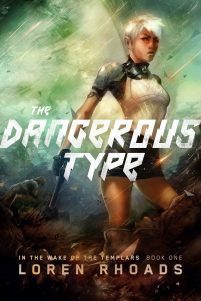
Cover of The Dangerous Type, Book One of the In the Wake of the Templars trilogy.
I conceived of Raena years before River Tam combined dancing and killing in Firefly, long before I knew Natasha Romanoff had gone to ballet assassin school. Raena’s first appearance in print was in 1986 in a story called “Claustrophobia” in a zine called simply Anthology.
Misty Copeland’s Under Armor video:
I was never built like a dancer. Even in the earliest picture of me in costume, I’m thick in the thighs and it’s clear my hips are going to be wide. Still, I loved the narrow, androgynous bodies of my dancemates. Raena’s shape is a tribute to them.
Raena’s size – barely five feet tall in a galaxy of much bigger creatures – is a direct tribute to my vertically challenged female friends. At 5’4”, I’m average height for an American woman, but I still feel dwarfed by most men. My friends who stand under five feet make up the difference with heels or platform shoes, so Raena wears – and fetishizes – her high heels.
I wondered: what if high-heeled shoes didn’t mimic weapons, but actually were weapons? What if your heels were steel instead of chrome? What if they were sharpened? What if your kick had a dancer’s power behind it? What if you could put out an android’s eye with your heel?
And what if my character had spent the early years of her life dressing in black, because black doesn’t show the blood? After she came out of solitary confinement in the dark, what would she wear? As hard as it is for me to imagine personally, Raena is tired of black. She plays with wearing poisonously bright colors or a mirrored cat suit because she’s done creeping around in the darkness.
So that’s the genesis of Raena Zacari and her fashion choices. From the outside, she may seem to fall into the cliché of the tiny fierce warrior waif like Alice from Resident Evil or Buffy Summers, but she’s more directly inspired by Princess Leia, if the princess liked to kill people with her hands. Milla Jovovich actually stands 5’9”, while Carrie Fisher is only 5’1”. The amazing Misty Copeland is 5’2”, plus the height of her pointe shoes. She might be a little tall for Raena as I imagined her in the books, but I wouldn’t want to tell her she couldn’t play the part.
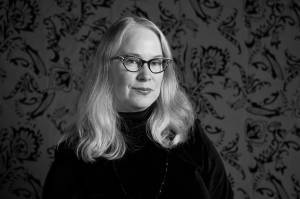
Photo of Loren Rhoads taken by Ken Goudey.
Loren Rhoads is the author of the In the Wake of the Templars trilogy, published by Night Shade Books. The Dangerous Type is out now, followed by Kill By Numbers on September 1 and the conclusion, No More Heroes, on November 3. She is the co-author (with Brian Thomas) of As Above, So Below and editor of The Haunted Mansion Project: Year Two.
July 8, 2015
Graveyard Shift Sister: Crystal Connor
And so I come full circle with this latest interview: the phenomenal Crystal Connor–half of the horror writing duo known as Connor Titus.
Earlier in the year, I interviewed Lori Titus on the Graveyard Shift Sisters blog and reviewed her book The Guardians of Man. You can check that interview out here.
I’ve known Crystal online for years and she is a fearless author, and a force of nature when it comes to branding and marketing her work. She’s also a champion of indie writers and a lover of all things horror.
Read my review of her apocalyptic horror release The End is Now and my interview with Crystal on the Graveyard Shift Sisters blog to find out why she’s “A Trusted Name in Horror”.
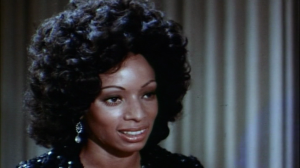
Marie O’Henry in Dr. Black and Mr. Hyde.
Don’t trust pimps named Silky or men who bring syringes on a date.


July 5, 2015
Interview with Eden Royce
My interview with author of adult and YA dark fiction Nicky Peacock.
Thanks, Nicky!
 Originally posted on Nicky Peacock - Author:
Originally posted on Nicky Peacock - Author:
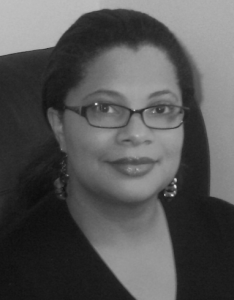 Tell us a bit about what you write and where you’ve been published…
Tell us a bit about what you write and where you’ve been published…
I write mainly dark fantasy and horror, although I’ve published a romance novella or three. I’ve had stories published with Dark Oak Press, Sirens Call Publications, Blood Bound Books and a few other presses that are now defunct. My most recent release, a short story collection called Spook Lights: Southern Gothic Horror and my novella “Containment” I self-published.
You can also find my work on Hellnotes.com where I review horror books and on GraveyardShiftSisters.com where I interview a female horror writer of color and review her latest work.
If you could elect any literary character as Prime Minister/ President – who would it be and why?
Jonathan Howard’s Johannes Cabal from the series of novels of the same name. Cabal’s intelligent, resourceful, and if he needs advice from someone who’s dead, he’s a necromancer.
Which TV…
View original 510 more words


June 23, 2015
The Things A Writer Can Learn In Six Months
I am pleased to have urban fantasy and horror author Amy Braun as a guest poster on the blog today. Amy was kind enough to share what she’s learned as a new author this year. Read on for some great info, even if you’ve been in the writing game for a while.
The Things a Writer Can Learn in Six Months
by Amy Braun
When 2015 started, I decided to take the leap: I would publish a full length novel by myself. I was proud of my standalone novella, Needfire, which served as a way for me to test the waters of the independent world. But of course, the next step was harder.
I didn’t go to school for writing. I don’t have any mind of independent business. Marketing and press boggle my mind. I thought I was going to gain readers and a following by continuing my method of trying my hand at short story submissions. I’ve had some great successes that way– my stories being favored by readers and even winning an Editors award for my macabre short story “Dark Intentions And Blood” in the AMOK! Anthology– but it wasn’t enough. My muse got a little greedy, and I wanted more.
Path of the Horseman became more than a standalone novel to me when I wrote it in 2014’s NaNoWriMo. I knew the moment I finished it that I wanted to share it with as many readers as I could. I took a risk with an emerging cover artist, worked with an editor I trusted, and chose to release it with a major distribution/publishing company that has helped thousands of independent authors get their work out to the world.
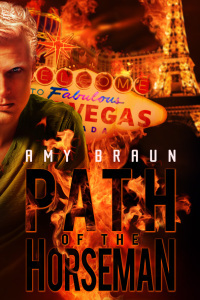
Cover for Braun’s novel Path of the Horseman
Needless, to say, when the release date came, I was both excited and nervous as Hell. I was given a guide about how to go about promoting my book. I learned that nothing was free, patience is an agonizing virtue, and you still have to hunt for acknowledgement.
Despite all that, I gained more positive feedback than I could have imagined, and not just from my family. People I’ll probably never meet praised my book and left reviews that humbled and honored me. I know that you can’t please everyone, and sooner or later I’ll get a negative review that will leave me doubting, but to know the risk would be rewarded brought me a joy that’s hard to describe.
So I took another risk, and released a novel that’s beyond precious to me. Demon’s Daughter, the first in my Cursed series, has been with me for years. Like Path of the Horseman, I know I’ve done something special with it and have received great feedback on it. But this series is my proverbial baby. I’m watching two of my most beloved characters– Constance and Dro– take their first steps into the literary world. I don’t know how they’ll do, and it’s a little worrying to hear what readers will think about a story I’ve poured my soul into.
That being said, I wanted to give Demon’s Daughter the release it deserved. That meant paying extra to work with a fabulous cover design company and go through the trials of printing and proofing physical copies, and learning the joys of proper book formatting. Oh, did I say joys? I meant agonies. I’m not kidding when I say the hardest part of printing paper books for me was getting the damn formatting to line up. I ordered at least two copies of each book, none of which were free. And don’t even get me started on headers and footers. So I learned the hard way to look at each book with excruciating detail before approving said proof. And of you’re going to print with Createspace, have a CMYK version of your cover available so your book cover isn’t filled with sharp, angry colors fighting to share space on the paper.
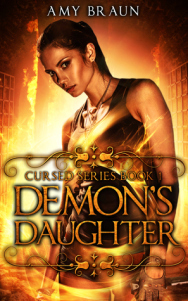
Demon’s Daughter cover
Ooooh…ahhhh…
Most recently, I learned the value of media kits and submitting queries for reviews. I’m still waiting on some of them, but looking back I should have sent out requests for reviews before I started publishing. That being said, I have a couple reviewers lined up who are generally excited about reading my work and have a significant following that will hopefully trickle over to me. I didn’t choose this career for the money, but it’s not easy working for free.
These are lessons I wish I had known earlier, but I’m new to the writing world. I’m learning from my mistakes, and I know I will be better for it when my next release– the sequel to Demon’s Daughter– comes out in December. Like I said, I don’t do this for the money. While my dream is to walk into my favorite bookstore and see my book on the shelves (or even better, see someone reading that book and surprising the hell out of them by explaining that I wrote it), I would be perfectly happy writing independently for the rest of my life.
The year is barely half over, and I know more lessons, good and bad, are on the way. But the most important thing I’ve learned so far is to keep going. I’ve had days where I’ve been frustrated, days where I’ve been lazy, and days where I couldn’t find motivation to write at all (AKA the worst days ever). But when I have those days, I look up at my desk and see the two printed books resting against the wall. I think about the entire process it took to create them, and how endlessly satisfying it is to see them there, knowing I can do it again. Writing a book is a long, sometimes torturous process. But the end result, no matter how you look at it?
Perfect.
************
Amy Braun is the author of the urban fantasy novels, Path of the Horseman and Demon’s Daughter. She’s been published in anthologies by publishers such as April Moon Books, Ragnarok Publishing, Mocha Memoirs Press, and Breaking Fate Publishing. To find out more about Amy, go to her blog literarybraun. Or you can find her elsewhere online at:
Facebook: https://www.facebook.com/amybraunauthor
Twitter: https://twitter.com/amybraunauthor
Google+: https://plus.google.com/u/0/103862966003258941899/posts
Goodreads: https://www.goodreads.com/amybraunauthor
Amazon: http://www.amazon.com/-/e/B00MU4BBYS





